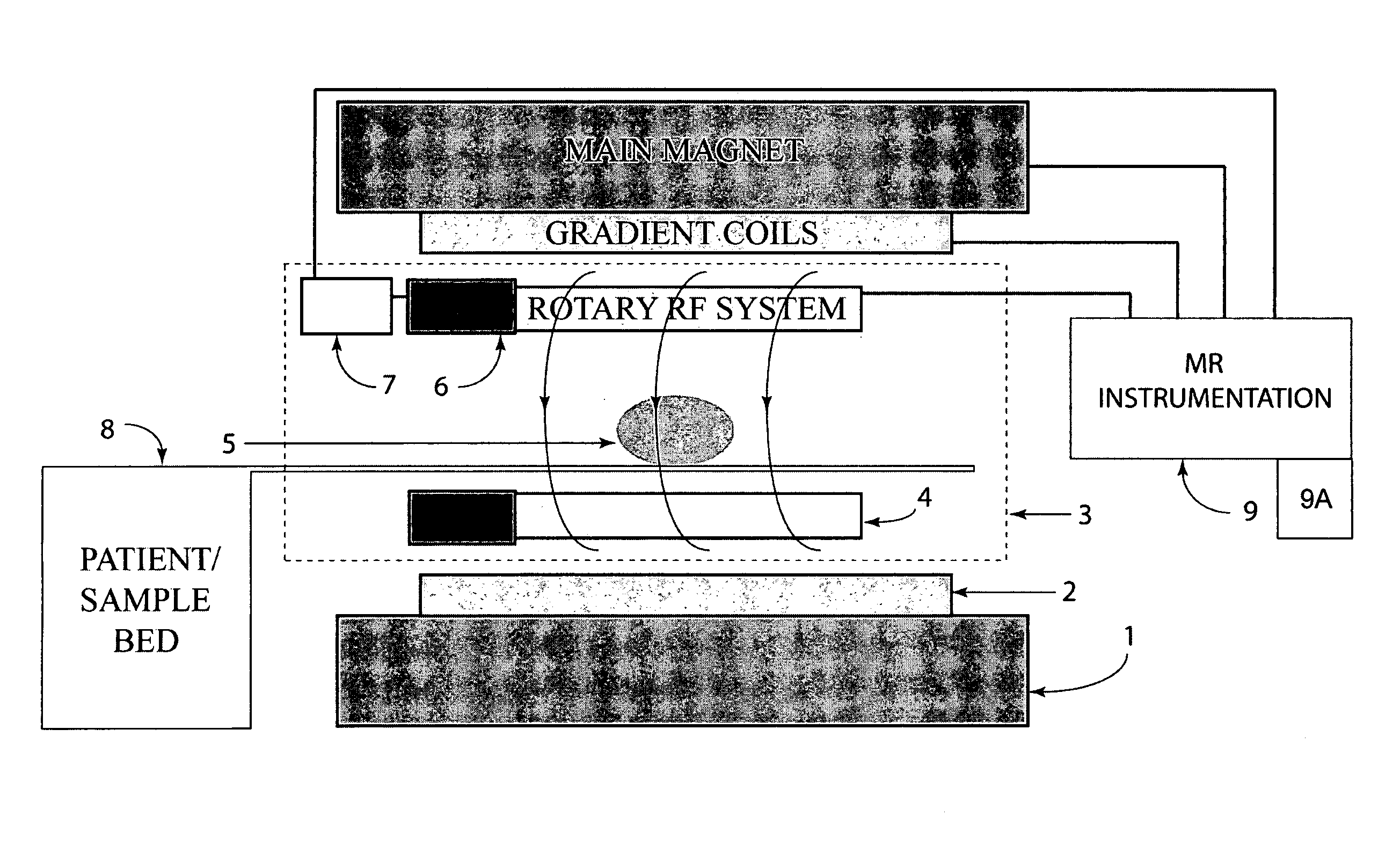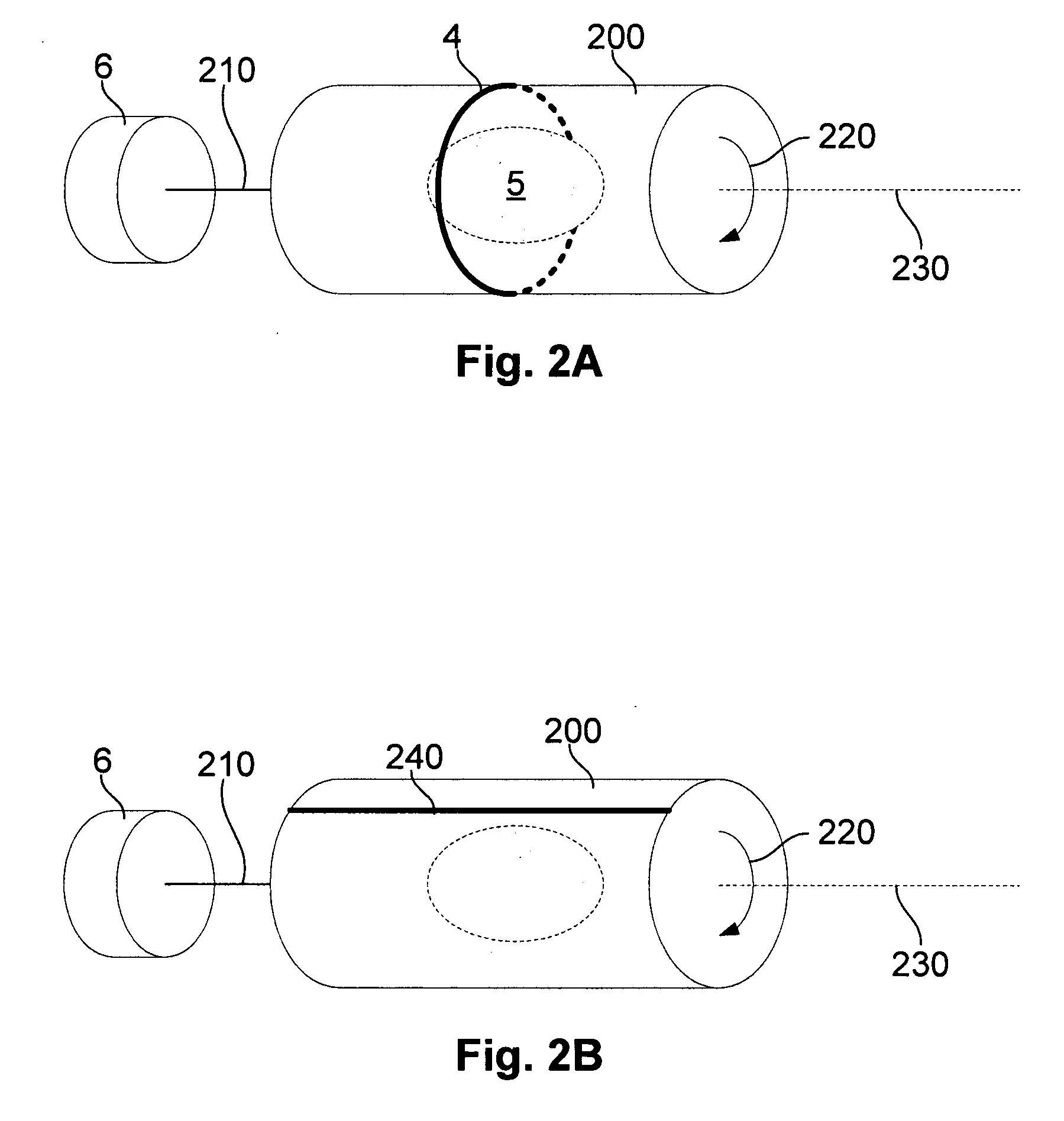MRI apparatus and method with moving field component
a field component and imaging system technology, applied in the direction of nmr measurement, instruments, nuclear magnetic resonance analysis, etc., can solve the problems of conductive transducers and instrumentation systems within the field gradient, the inability to use surface coils as transmit coils, and the range of system limitations and deleterious effects
- Summary
- Abstract
- Description
- Claims
- Application Information
AI Technical Summary
Benefits of technology
Problems solved by technology
Method used
Image
Examples
experiment 1
ty and In-Vivo MRI with Rotating Transceive
[0266]In this experiment, a Fast Low Angle SHot (FLASH) imaging sequence was selected to obtain an axial image with a slice thickness of 5 mm. The field of view (FOV) for image acquisition was set to 25 cm×25 cm and the matrix size was 256×256. A 3 ms duration Gauss pulse was used to nutate the spins by 45°, while the time of repetition (TR) was 70 ms.
[0267]The transceive coil 13 is used to both transmit the RF energy and receive the FIDs (i.e. no pin-diodes are used for switching). The reception of FIDs during RF coil 13 rotation is viable, because the frequency of Larmor precession (f0=85.45 MHz) is much higher than the frequency of rotation (i.e. 18.4 Hz), and so in the reference frame of spins, the coil 13 may be regarded to be almost stationary.
[0268]FIG. 6 is an axial sensitivity profile and illustrating the profile of the RF field B1 obtained with the described FLASH imaging sequence when the coil is fixed at 0° angular position. The...
experiment 2
mity with Rotating Transmit and Stationary Receive MR
[0274]In this example, instead of receiving the FID or echo signals with the same coil 13, a separate 2-element receive-only phased array coil 12 was constructed, as shown in FIG. 5G above. The receive coils 12 are situated on the outer surface of the fixed cylinder 11. The RF coil 13 on rotating cylinder 14 is rotated and used as transmit-only coil. Fast pin-diode switching systems are included in both coils 13, 12, which effectively open-circuits one coil from another whenever the other coil 13, 12 is in operation.
[0275]FIG. 10 illustrates the image of the homogenous cylindrical phantom 5 acquired with this setup. In this image, a top part of the cylindrical phantom image appears dark due to the presence of an air bubble. The dark artefacts on the periphery of the cylindrical phantom image are due to plastic holders which were used initially to support the cylindrical phantom inside the sample tube 11. These supports were remove...
experiment 3
ional RF Pulses with Rotating Transceive MR
[0276]For spatially selective magnetization excitation of four Gauss shapes, the multi-dimensional RF pulses and gradient field waveforms were computed assuming a uniform profile for the RF field B1, as shown in FIG. 11.
[0277]A Multi-Spin Multi-Echo (MSME) imaging pulse sequence was selected, with the RF pulse train being transmitted during a time period of 40 ms while applying transverse gradients as shown in FIG. 11. While this excites a volume of spins, the slice position was selected during the application of the 180° refocusing RF pulse, thereafter, frequency and phase encoding was performed. The thickness of the selected slice was chosen to be 5 mm, while the FOV was set to 22 cm×22 cm with a matrix size of 256×256.
[0278]The RF coil 13 operating in transceive mode and rotating at ˜1000 rpm was engaged in this experiment. Note that the receive-only phased array coil 12 is removed. The TR and TE were set to 80.2 ms and 38.5 ms, respecti...
PUM
 Login to View More
Login to View More Abstract
Description
Claims
Application Information
 Login to View More
Login to View More - R&D
- Intellectual Property
- Life Sciences
- Materials
- Tech Scout
- Unparalleled Data Quality
- Higher Quality Content
- 60% Fewer Hallucinations
Browse by: Latest US Patents, China's latest patents, Technical Efficacy Thesaurus, Application Domain, Technology Topic, Popular Technical Reports.
© 2025 PatSnap. All rights reserved.Legal|Privacy policy|Modern Slavery Act Transparency Statement|Sitemap|About US| Contact US: help@patsnap.com



